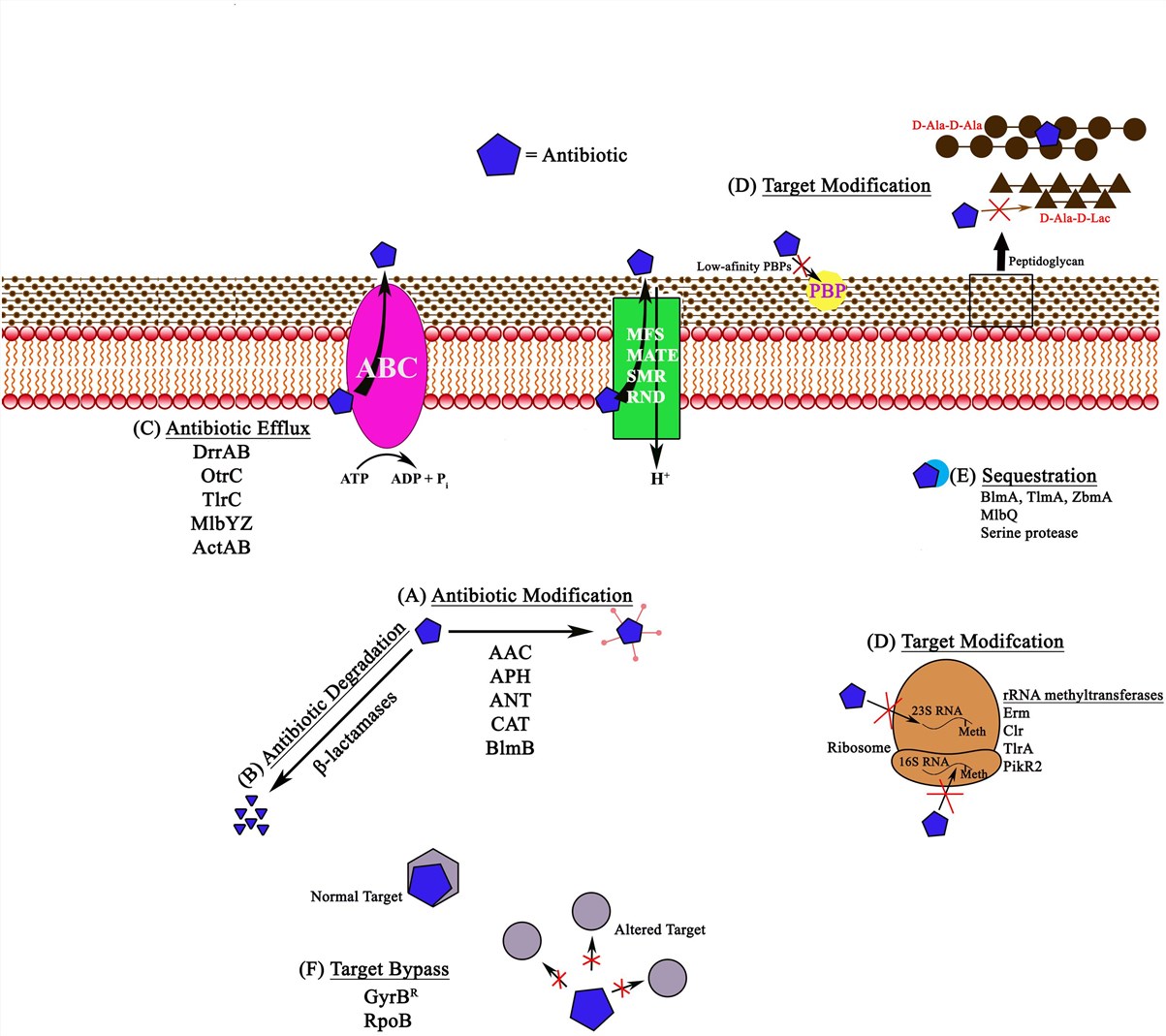Severe Bacterial Pathogens
Identifying a lead drug candidate is an expensive and time-consuming process. As a leading company in the area of drug discovery, Creative Biolabs is capable of offering advanced antibacterial drug discovery solutions efficiently and cost-effectively for global customers. Based on the top technology platform, our experienced scientists will work with you in each step of your programs and get the results you need to make critical decisions and advance your projects.
Antibiotic
Antibiotics have revolutionized medicine. During the past years, antibiotics have been widely used as it can improve the fate of infected patients, reduce childhood mortality, increase life expectancy, and change the way various diseases and surgical procedures treated. Unfortunately, the misuse of antibiotics has led to the rapid appearance of antibiotic-resistant strains and thus the failed treatment of more and more infections caused by antibiotic-resistant bacteria. To solve the resistance problem, many new antibiotics have been introduced by the pharmaceutical industry from the late 1960s through the early 1980s, but after that, the antibiotic pipeline began to dry up and fewer new drugs were introduced. As a result, since 2015, many decades after the first patients were treated with antibiotics, bacterial infections have again become a threat. Therefore, it is urgent to overcome antibiotic resistance and develop more efficient drugs to treat bacterial infections.
 Fig.1 Schematic representation of different antibiotic resistance mechanisms in bacteria.1
Fig.1 Schematic representation of different antibiotic resistance mechanisms in bacteria.1
Antibiotic-Resistant Bacterias
Antibiotic-resistant infections are already widespread across the globe. To date, two distinct types of antibiotic resistance mechanisms have been proposed, namely intrinsic and acquired resistance. For instance, microorganisms can be intrinsically resistant to certain antibiotics as a result of inherent structural or functional characteristics. Meanwhile, microorganisms may have acquired resistance that can be obtained via chromosomal mutations or, more commonly, by acquiring an antibiotic resistance gene from another bacterium via mobile plasmids or transposons (so-called horizontal gene transfer). Currently, the most notorious antibiotic-resistant bacteria is S. aureus, and antibiotic-resistant microorganisms including Enterococcus faecium, S. aureus, Klebsiella pneumoniae, Acinetobacter baumannii, Pseudomonas aeruginosa, and Enterobacter species have been identified as the so-called “ESKAPE” microorganisms which have caused significant morbidity and mortality.
It is widely acknowledged that antibiotic resistance is one of the biggest threats today. To help global customers discover and develop more effective antibiotic drugs, Creative Biolabs has successfully established an advanced technology platform. Aided by experienced scientists, we are able to accelerate your projects targeting numerous bacterial pathogens, which including but not limited to:
As a forward-looking drug discovery service provider, Creative Biolabs is dedicated to promoting the development of worldwide clients’ projects. If you are interested in our service, please feel free to contact us for more details.
Reference
- Kaur, P. and Peterson, E. Antibiotic resistance mechanisms in bacteria: relationships between resistance determinants of antibiotic producers, environmental bacteria, and clinical pathogens. Frontiers in Microbiology. 2018, 9, p.2928. Distributed under Open Access license CC BY 4.0, without modification.
For Research Use Only.
